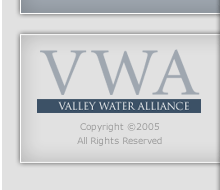
Water Supply Report - A Good Start to a Complex Issue
Additional Studies Need To Be Completed
Water is vital to life in California’s Central Valley. More than 70 years ago, what we now know as the Central Valley Project and its Friant Division were initiated by the State of California and later developed by the U.S. Bureau of Reclamation to restore water reliability within a region where the agriculture base was declining as a result of diminishing groundwater supplies. Construction of Friant Dam and the Friant-Kern and Madera canals six decades ago ultimately transformed the central and southern San Joaquin Valley into an incredibly productive agricultural region and a thriving diversified economy.
In 1988, a coalition of environmental and commercial fishing organizations, led by the Natural Resources Defense Council (NRDC), sued the federal government. Over time the issues in the case have changed (NRDC has amended its lawsuit 7 different times) and now includes allegations that Friant Dam is being operated illegally to the detriment of historic salmon and steelhead fisheries. The stated goal of the environmental plaintiffs is to have San Joaquin River flows restored so historic fisheries can be re-established and sustained. However, because Millerton Lake (behind Friant Dam) has such limited capacity and the San Joaquin River’s water is being fully used beneficially and to meet downstream riparian demands, any restoration can only happen by taking water away from those who have used Friant supplies for almost 60 years.
In 1999, the Friant Water Users Authority (FWUA) joined in good faith settlement discussions with the NRDC coalition. The effort involved a series of studies to identify potential supplemental water sources as well as restoration strategies for restoring the river. One of the settlement effort’s guiding principals was to supply water required for restoration without adversely impacting the Friant service area. That region includes numerous communities from Merced County to Kern County, 15,000 family farmers, and more than 1.25 million residents.
The Water Supply Report looked at potential supplemental water supply alternatives for river restoration. The effort was only to identify potential alternatives. There was no expectation the studies would ever develop either sufficient or reliable enough data to determine the feasibility of any given alternative. It was truly a “pre-reconnaissance level” effort. All concerned understood each alternative had its own limitations and assumptions, requiring further review and analysis. Using the Water Supply Report as anything but an initial review of possibilities attempts to make more of this incomplete technical analysis than exists. No specific water supply alternative was ever intended to emerge because of the lack of information to support a specific conclusion.
Despite NRDC’s public statements to the contrary, the Water Supply Study’s findings are inconclusive and lack sufficient evidence to support assertions often made by environmental interests regarding how much water is needed, and where it would come from, to restore a salmon fishery on the San Joaquin River. A considerable amount of data and research remains to be gathered before the report can be considered usable.
The Valley Water Alliance encourages the completion of the Water Supply Report as a means of identifying viable solutions for meeting water supply demands for river restoration. However, the potential social, cultural and economic impacts of any alternative upon the Central Valley’s multi-billion dollar economy must be taken into consideration when viable alternatives for re-watering the San Joaquin River are considered.
Click here to download Water Supply Report White Paper (56kb pdf)
